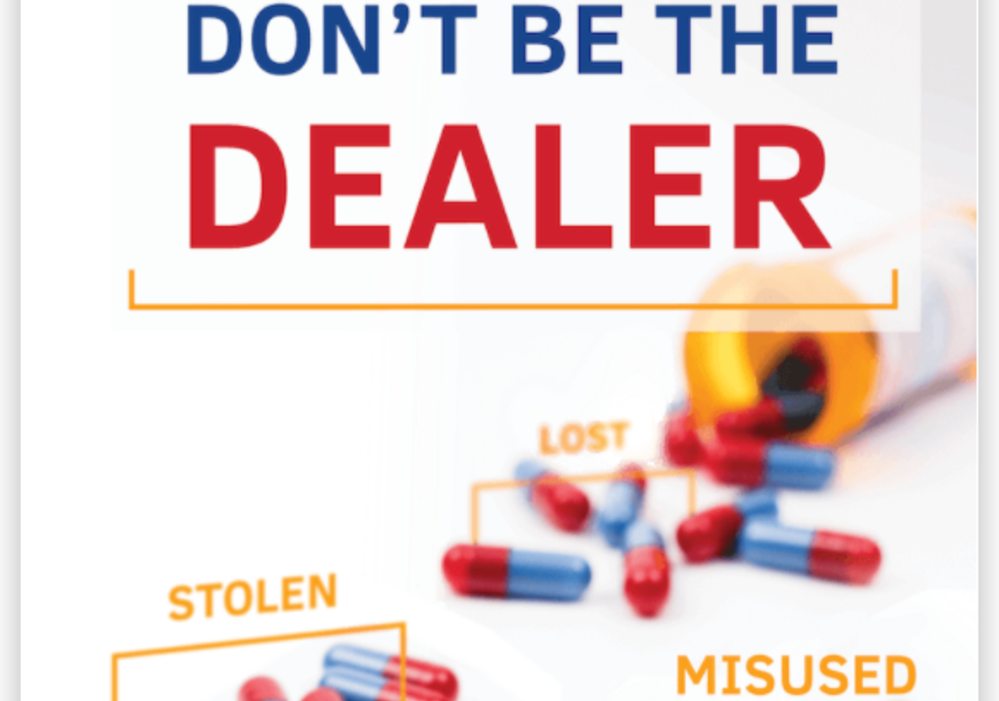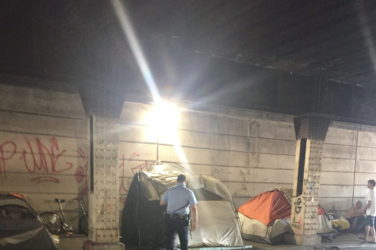The Drug Enforcement Administration really, really wants you to give them your leftover prescription drugs. All week long, in the run up to this Saturday’s “National Prescription Drug Take Back Day,” police departments and politicians have been urging people across the country to dispose of their unused, unwanted or expired medications—oh, and vape pens, so long as the battery can be removed from the device.
If you don’t dispose of your leftover medications or e-cigarettes, they may “fall into the wrong hands,” warned Republican Texas Senator John Cornyn. Plugging its local take back day program on Twitter, Minnesota’s Hennepin County Sheriff claimed “prescription opioids remain one of the major gateways to addiction.” A local Indiana news outlet reported the DEA’s Take Back Day advertisement verbatim: “The Drug Take Back initiative aims to prevent prescription drug abuse and theft through proper disposal.”
These programs prevent neither addiction nor overdose deaths.
Of all the DEA’s drug-war activities, from reckless no-knock raids to warrantless surveillance and the arbitrary seizing of billions of dollars in private property, Drug Take Back Day sounds rather innocuous, even quaint. Ordinary Americans are simply being asked to perform a public service by safely disposing of medication they no longer want or need. Safe disposal of medication, after all, is important for the environment. Active pharmaceutical ingredients have been detected in water and soil, posing risks to humans and wildlife. The Food and Drug Administration and the Environmental Protection Agency have easy steps to discard medications in an environmentally conscious way, in addition to many pharmacies now having permanent drop-off boxes for unwanted drugs.
If Drug Take Back Day was merely framed to the public as a way to protect people, animals and the environment from pharmaceutical pollution—akin to sharps containers—then it wouldn’t warrant much attention or scrutiny. We could acknowledge the importance of safe disposal for the environment and simply move on. But the DEA, police departments and politicians claim that Drug Take Back Day is vital to the nation’s response to the overdose crisis that took more than 96,000 lives in the last year.
There’s just one problem: These programs prevent neither addiction nor overdose deaths.
Notably absent from the DEA’s Drug Take Back Day publicity is the quantity of actual controlled substances the program acquires. Raking in nearly a million pounds of vitamins and expired blood pressure medication certainly does nothing to prevent addiction and overdose. One 2017 study by researchers at Wake Forest University found that a mere 5 percent of medications collected were controlled substances that carry a risk of addiction. What this study did that few others had previously done was compare the amount of controlled substances dispensed to the total given back. The researchers found that take back programs collected less than 1 percent of the controlled substances that were dispensed.
Drug Take Back Day accomplishes little by way of preventing overdose deaths as well. In 2010, the first year of the national take back day program, roughly 14,500 overdose deaths involved a prescription opioid. In 2019, the latest year for which full data exists, deaths involving a prescription opioid remained steady at 14,139. (It should be noted that such deaths overwhelmingly involved prescription opioids in combination with other substances.)
At best, these programs are a fig-leaf that perpetuates false perceptions. At worst they could be pushing even more people to the illicit, adulterated market.
Meanwhile, during this same period, deaths involving heroin, illicit fentanyl and meth have soared to new heights. Dr. Stefan Kantrowitz, an addiction medicine physician in New York, succinctly described Drug Take Back Day as “hygiene theater” for opioid use disorder.
At best, drug take back programs are an anodyne, feel-good fig-leaf that perpetuates false perceptions about the DEA’s role in the overdose crisis, and the nature of the crisis more broadly. At worst, at a time when harm reductionists are increasingly calling for safe supply, these programs could be pushing even more people to the illicit, adulterated market where the vast majority of overdose deaths occur. If someone loses their stash because their parents, say, zealously delivered it to the DEA, what is that person likely to do next?
Writing in the New York Times, Leo Beletsky and Jeremiah Goulka (my colleagues at Northeastern University’s Health in Justice Action Lab), argue that the DEA’s draconian tactics have, in fact, fueled the overdose crisis. Contrary to the pop-culture image of DEA agents working deep undercover to disrupt drug traffickers, the DEA actually plays a far more unsexy role in our everyday lives: regulating and overseeing the pharmaceutical supply chain.
Doctors are increasingly uncomfortable prescribing opioids to patients even when pain relief is medically indicated, citing fear of the DEA. The DEA also makes medications like buprenorphine and methadone difficult for doctors to prescribe and for people who use drugs to obtain. “Because of [the DEA’s] incompetence, the opioid crisis has gone from bad to worse,” Beletsky and Goulka write.
Focusing on the prescription drug supply has missed, and continues to miss, the forest for the trees. It’s hardly true that prescription opioids are a “major gateway” to heroin. “Heroin as an initiating opioid now exceeds hydrocodone and oxycodone,” according to a 2017 paper on how people get their start on opioids.
That trend is reflected in ever grimmer mortality statistics: The vast majority of “overdose” deaths today involve a mix of multiple substances that are not supplied from medicine cabinets with a few leftover Percocets. The illicit drug supply now contains uber-potent, Illicitly manufactured fentanyl (and its many analogues), methamphetamine and obscure benzodiazepines. The record-breaking levels of overdose deaths are due to this deadly combination of substances that leave even the most experienced drug users vulnerable to fatal overdoses.
As the activist Garth Mullins, host of the excellent Crackdown podcast, recently told Filter, “We need more pharmaceutical opioids, not less.” Drug take back days achieve little and could easily be making a dire situation worse.
Image via the DEA





Show Comments